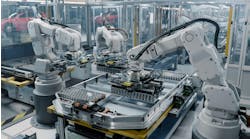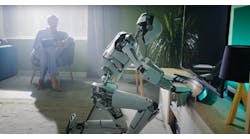I have seen with my own eyes how automation and robots improve manufacturing and create better jobs on the plant floor. I asked several machine builders and vendors how robots and technology in manufacturing will take peoples jobs. The answers were very clear, they won't. So don't listen to that crap. Here is what a few of them said.
"Robots are actually adding jobs, says Matt Wicks, chief robotics solution architect at Honeywell Intelligrated in Mason, Ohio. "Robotic advances are shifting the workforce to jobs that are more uniquely suited for people to perform and away from dangerous, strenuous and less-rewarding tasks."
Today’s automation trends have a strong potential to benefit everyone, continues Wicks. "There are encouraging signs, both in the coming year and further out, that robots are far less likely to replace people than to improve their overall job prospects," he says. "At the World Economic Forum in 2018, for example, it was estimated that by the year 2022, AI and robotics will have a net increase of more than 60 million jobs."
Far from replacing their human counterparts, robots are becoming their co-workers and collaborators — creating new opportunities for productivity, accuracy, cost savings and job satisfaction. "As beneficial as these improvements are, changing consumer expectations will make them critical to the survival of many retail and distribution operations," says Wicks.
Mobile robots are becoming commonplace in warehouses, distribution centers, factory floors, etc. "With a projected 2 million manufacturing jobs within the USA going unfilled in the next decade, robots are helping resolve this issue," says Nicolas Lauzier, VP of engineering at Robotiq.
He provided the following quote from 'The skills gap in U.S. manufacturing 2015 and beyond' published by Deloitte Consulting LLP and the Manufacturing Institute, "The benefits of cobots working alongside humans will become more apparent as the labour shortage persists because one benefit of cobots is that they supplement human output to boost overall efficiency."
The robotic industry, which is primary now all manufactured off shore, is booming. "The media and so called pundits are warning of the reduction in jobs if we increase our robotic manufacturer products," says Bill Hennessey, CEO of ALIO Industries. "I assume they have not noticed that we have already reduced our jobs and manufacturing drastically."
Since the 80’s manufacturing plants and small town America have been disappearing at very concerning and increasing rates. "In the early 80's I remember the same negative comments about robots we were placing in auto plants and construction equipment plants, that people would be put out of work," says Hennessey. "This narrow vision has returned. Lessons learned in the 80's and 90's support the opposite which is that the infrastructure to automate created more and higher paying jobs than the ones replaced. As an alternative, consider what happens to small town America when that manufacturing plant leaves—the whole town could go down."
If the USA had kept automation numbers up as other countries did we would have a vibrant exporting economy instead of a deficit spending importing country, continues Hennessey. "It's amazing that recently this job loss negativity related to robotics and automation occurred while industry was moving out of the USA at the highest rates in our history to avoid high corporate taxes in the USA, only to automate in another country," he said.
Robotic automation is a must to build today's and especially tomorrow's products no matter which country it is manufactured in and no matter the hourly wage workers get. "Automation created jobs in Detroit in the old days and higher wages for techs and programmers, so automate or send jobs to China, where they automate more than any other nation all due to taxes and incentives plus human workers lack of quality, says Hennessey. "Robots are currently moved on AGV and linear slides. Growing legs, as like the robots Boston Dynamics build for military, is technology possible just not cost effective for manufacturing."
The past decade has been a growth period for the United States. "While automation has been a big benefactor of this wave, the fear of the "job killing" robot hasn’t quite panned out," says Scott Marsic, product manager for Epson Robots. "Interestingly as robot placements have increased over the past decade so have job openings (ITR 2019). What we continue to see are that many industries still have significant technical labor gaps, and those gaps present opportunities for those trained—particularly in automation industries—to take advantage of them."
Automation creates opportunities for companies to shift their labor force from the jobs people typically don’t want—the mundane, repetitive, unsafe tasks—to more productive and higher value tasks," continues Marsic. "This evolution is helping our manufacturing sector to be more competitive and take better advantage of the labor force available to them. Further, automation is creating opportunities for employees to expand their careers into the maintenance, programming and management of automation equipment and tools."
Clearly, it has never been a better time to team with robots and automate to create the jobs of the future. How can I help?






